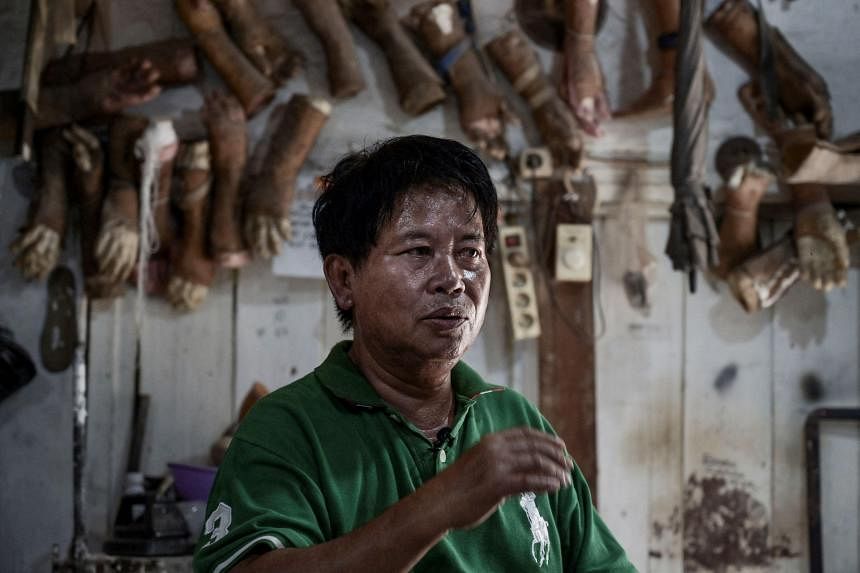TANGERANG, Indonesia – When Mr Ali Saga visited a clinic in Jakarta four decades ago, he watched as patients and health workers scrambled to get away from him.
“The doctor suddenly shouted at the patients, ‘stand back! this person is a leper!” the 57-year-old said, recalling one of the most devastating moments after his diagnosis in the 1970s.
“They also roughly used a syringe to test my skin and I cried. My skin might not feel anything but my soul was hurt,” the former leprosy patient added, choking back tears.
Now he is using his pain to help other residents of a village on the outskirts of the Indonesian capital live a normal life after leprosy with hand-crafted prosthetic limbs.
After Brazil and India, Indonesia has the world’s third-highest cases of leprosy – a contagious bacterial disease transmitted by prolonged close contact with untreated cases.
Ahead of World Leprosy Day on Sunday, the health ministry said the country still has over 15,000 active cases, with more than 11,000 new cases recorded last year.
The ancient disease, which causes disabilities and loss of feeling in reddish skin patches, is now diagnosed with a skin biopsy and easily treated with multidrug therapy.
But Mr Saga and other residents of Sitanala village – where hundreds of former leprosy patients have relocated to find solace – have been treated as outcasts for years and dubbed a “leper colony” by local media.
They are heavily stigmatised by pervasive perceptions around leprosy, also known as Hansen’s disease, with some Indonesians believing the affliction is a curse sent by God that can be passed on by brief contact.
But in a small, dusty workshop surrounded by fake body parts hung on white walls, Mr Saga is chipping away at that social cold shoulder, sculpting artificial limbs that have been improving residents’ lives since 2005.
One of the neighbours to receive Mr Saga’s creations is 70-year-old tailor Cun San, who had a leg amputated in his teens and lost another in 2007.
“I once thought I would never be able to walk again… but now I am so grateful I can walk normally,” said Mr San.
